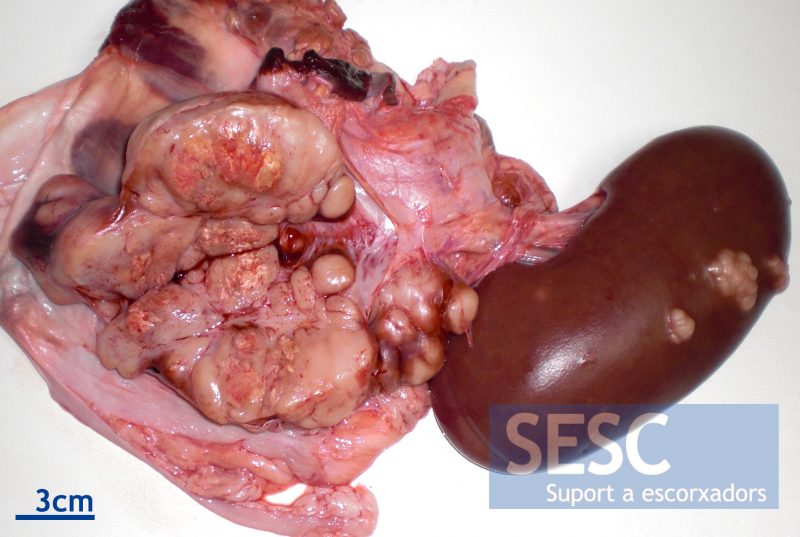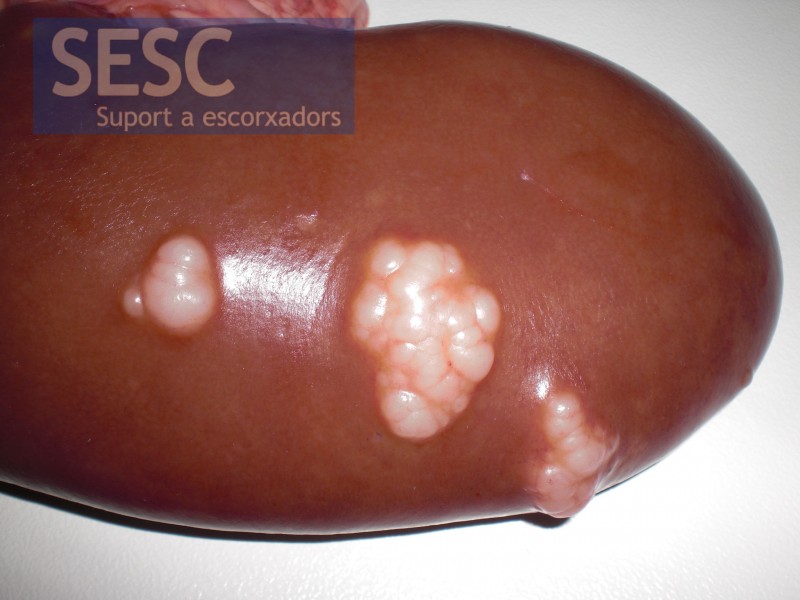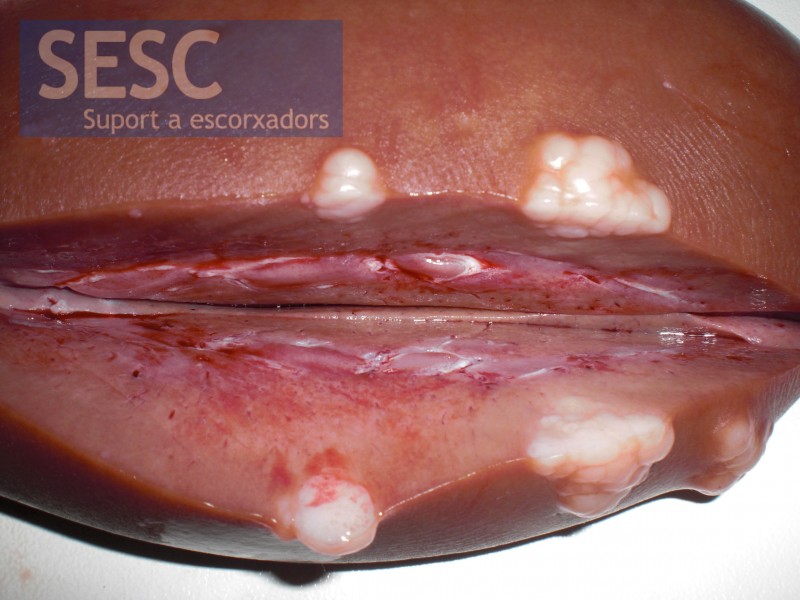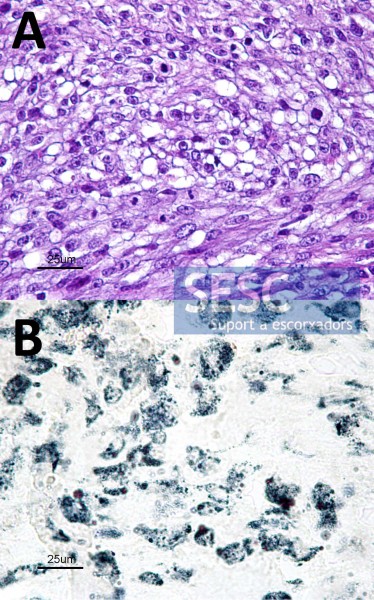Liposarcoma in a sow
In a three years old sow carcass multinodular, whitish lesions were observed adjacent to the kidney and also affecting the renal parenchyma.
The differential diagnostic was of an adrenal gland tumor or a lymphoma.
Histopathological study showed that all masses were formed by an anaplastic mesenchymatous malignant neoplastic cell proliferation.
The tumour cells had multiple small empty vacuoles in their cytoplasm which pointed to a diagnosis of liposarcoma (malignancy arising from adipose tissue cells).
Sudan Black staining, done on formalin-fixed but not paraffin-embedded tissue, stained the content of these vacuoles confirming that they contained lipid material.
This case has been published in the scientific journal: Journal of Veterinary Diagnostic Investigation.





